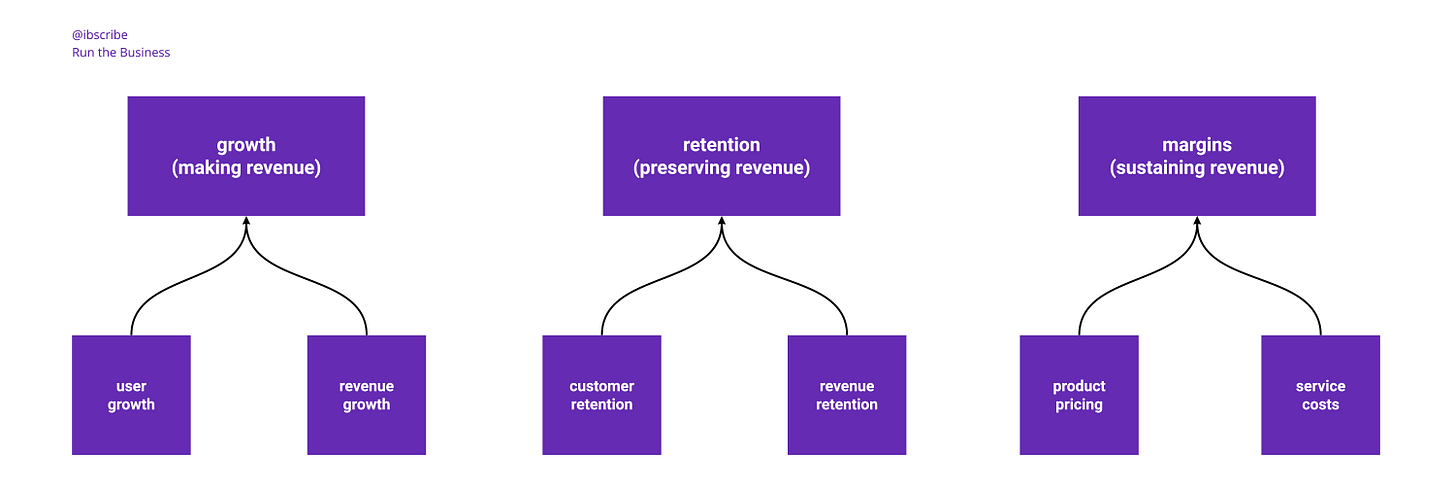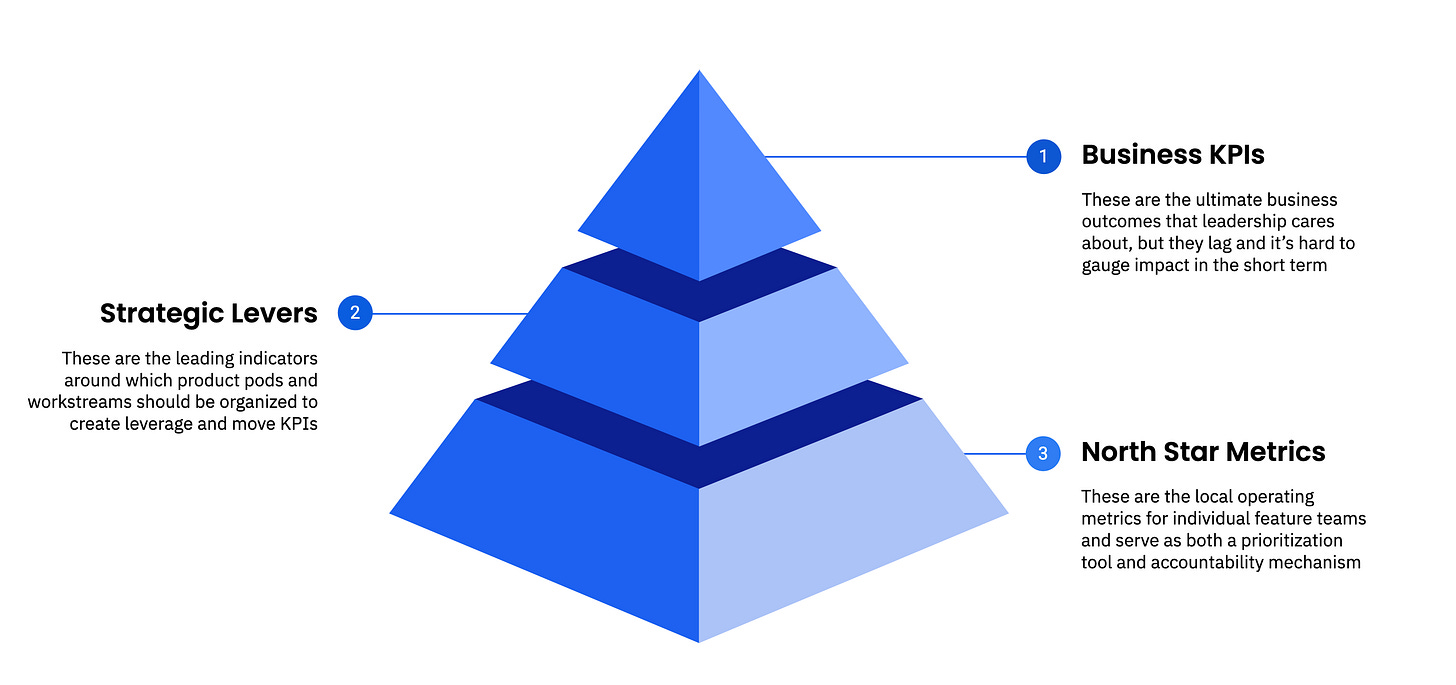From Daily Decisions to Bottom Line
Connecting Product Work to Revenue
Readers of this newsletter know I love to delve into the topic of connecting product work to revenue, so when I was asked to speak at ProductCon in New York last week, I expanded on this framework I’ve shared before:
The quick summary of this model is [1] executives / investors care about the KPIs of the business, but they are lagging indicators which are hard to evaluate so you need to introduce [2] strategic levers as a mechanism for creating leverage to move those KPIs, which ideally serve as the pillars of your R&D / GTM investment and also help you organize and hold teams accountable, ultimately connecting to [3] north star metrics that teams own and drive and utilize for prioritization and trade-off decisions because they are leading indicators.
The piece I added for my ProductCon talk, given that the PMs in the audience were looking for practical, actionable advice, was a breakdown of the operationalization tree (i.e. what does it take to put this mindset into practice and what are best practices / anti patterns).
Specifically, when you are trying to connect product work to revenue, you end up having to deal with:
multiple dimensions of revenue (generation, preservation, sustainability)
an incomplete picture of the user / buyer journey regarding monetization
the desire for a single, simple metric that is easy to track and report on
the need to should a correlation between user behavior and monetization
the tension between monitoring output as a proxy for eventual outcomes
In terms of best practices, that means:
using the laddering mechanism outlined above to tell a metric connection story
making trade offs and choosing what aspect of revenue matters most now
looking at both quantitative and qualitative signals to enrich the story
picking metrics that are good enough vs trying to find the perfect metric
supporting the organization by not orienting on complex, compound metrics
building morale by showing a team can control the movement of a metric
creating rituals to not only report on the metric but understand drivers as well
When things go sideways, we see the following anti patterns:
treating revenue as the actual direct metric that a product team is accountable for
trying to show a single hop between feature development and revenue generation
“peanut buttering” by refusing to make a priority call between revenue dimensions
treating one-off anecdotes as representative of the majority customer journey
over-engineering metrics by trying to include every dimension in an uber-metric
making it difficult for the organization to dissect and refine a north star metric
letting “orphan” teams that don’t tie to strategy / outcomes persist as investments
As always, I’d love to hear from readers who have gone on the roller coaster ride of connecting product work to revenue - please chime in via comments👇 or join the chat via the Substack app.
And if you enjoyed this post, please consider subscribing.
further reading / references
you can see the slides from my ProductCon presentation here and watch the recording here
I’ve written and spoken about the importance of connecting B2B products to revenue by cultivating a revenue mindset for PMs - for paying subscribers there is also a video deep dive on applying my metrics ladder framework in practice
I’m once again offering my cohort-based course on Maven, which covers this topic and many more around Scaling B2B Products
I’m co-hosting a free, virtual talk on Layering AI into your B2B Product and GTM - join for what should be an insightful discussion and Q&A session with an expert
childish drawing / interpretation








